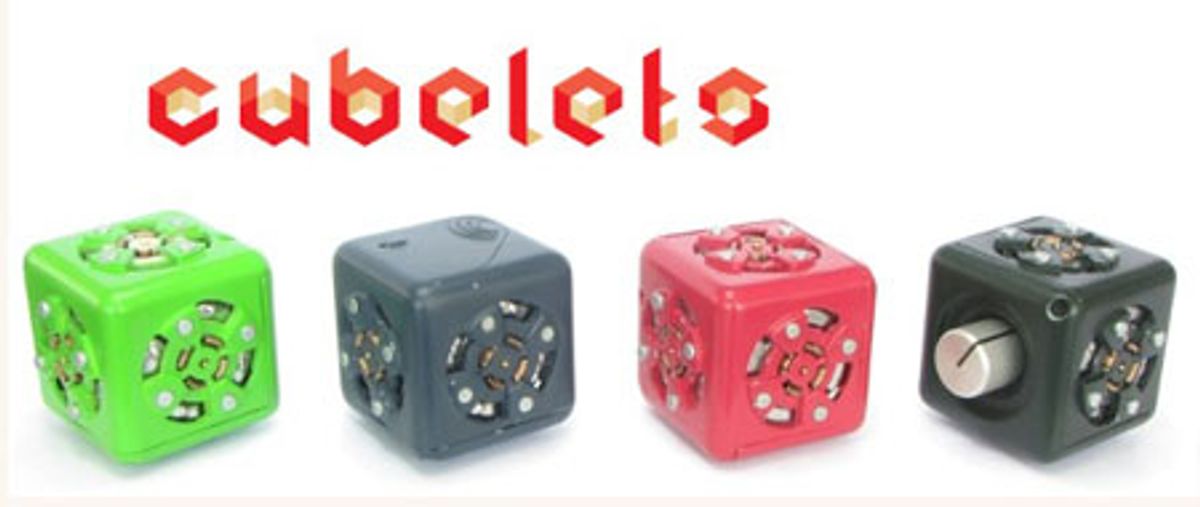Modular Robotics' Cubelets are designed to be an absurdly simple way to build robots. You don't have to know how to program anything or even how to build anything; just snap a few specialized Cubelet blocks together and poof, you've got a robot. Want to build something different? Just use different blocks in different combinations, it's that easy:
One set of 20 Cubelets would cost you $300, if you could buy them, which you can't, because they're sold out. In that set you'd get:
Action Blocks: 2 Drive, 1 Rotate, 1 Speaker, 1 Flashlight, 1 Bar Graph
Sense Blocks: 1 Knob, 1 Brightness, 2 Distance, 1 Temperature
Think/Utility Blocks: 2 Inverse, 1 Minimum, 1 Maximum, 1 Battery, 2 Passive, 2 Blocker
Last time I posted about Cubelets, I posed a question that nobody even tried (as far as I could tell) to answer, so I'm just going to go ahead and pose it again: How many different permutations of robot you can make with one set of 20 Cubelets, keeping in mind the following:
-Each Cubelet has either 5 or 6 attachment points (depending on what it does)
-The same set of Cubelets functions differently when arranged differently
-Cubelet permutations must be able to exist in physical space (tricky!)
You may ignore the fact that using (say) two inverse blocks in a row is functionally identical to not using any inverse blocks, and assume that a Cubelet robot that has a different size or layout counts as a different robot. And while the definition of "robot" is, as always, a little bit iffy, suffice it to say that to count, a Cubelet robot has to be able to sense something or perform some action.
If you can convince us that you have the right answer (post it in the comments section below), it's good for an Automaton t-shirt. Good luck!
[ ModularRobotics ]
Evan Ackerman is a senior editor at IEEE Spectrum. Since 2007, he has written over 6,000 articles on robotics and technology. He has a degree in Martian geology and is excellent at playing bagpipes.




